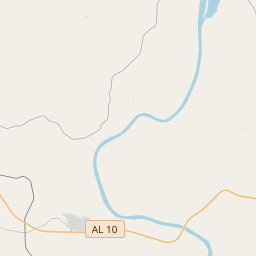Wilcox Female Institute
Historical marker location:
209 North Broad Street, Camden, Alabama
( Marker is at the intersection of North Broad Street (Alabama Route 28) and Fail Street, on the left when traveling north on North Broad Street.)
Marker installed: 1969







© OpenStreetMap contributors
Loading...
Searching for other points of interest within 3 miles of this location.The city of Huntsville, Alabama played a key role in the United States space program during the Cold War. The Redstone Arsenal, located in Huntsville, was the site of the development of the first ballistic missile, and later became the center of the U.S. Army's missile and rocket programs.
About Wilcox County
Wilcox County Timeline
Wilcox County, Alabama, located in the southwestern part of the state, has a rich history that dates back to ancient times. The area that is now Wilcox County was first inhabited by Native American tribes, primarily the Creek Nation. In the early 1800s, European settlers began to arrive in the area, primarily from the Carolinas and Georgia, establishing farms and plantations.
The county was officially established on December 13, 1819, just a few months after Alabama achieved statehood. It was named after Lieutenant Joseph M. Wilcox, a military officer who fought in the War of 1812. Its county seat, Camden, was also designated at this time, becoming an important center for trade and commerce in the region.
During the antebellum period, Wilcox County became known for its vast plantations and extensive slave labor. The county thrived economically on cotton production, with numerous plantations scattered across the area. Slavery and the plantation economy played a significant role in shaping the county's society and influencing its political landscape.
The Civil War brought significant changes to Wilcox County. Many of the plantations were destroyed or abandoned, and the enslaved population gained their freedom. After the war, the county struggled to recover from the devastation, but gradually, new industries emerged, such as timber and lumber mills. Today, Wilcox County is known for its natural beauty, including the famous Rikard's Mill Historic Park, providing glimpses into the county's past and offering a variety of recreational activities for visitors and residents alike.
The county was officially established on December 13, 1819, just a few months after Alabama achieved statehood. It was named after Lieutenant Joseph M. Wilcox, a military officer who fought in the War of 1812. Its county seat, Camden, was also designated at this time, becoming an important center for trade and commerce in the region.
During the antebellum period, Wilcox County became known for its vast plantations and extensive slave labor. The county thrived economically on cotton production, with numerous plantations scattered across the area. Slavery and the plantation economy played a significant role in shaping the county's society and influencing its political landscape.
The Civil War brought significant changes to Wilcox County. Many of the plantations were destroyed or abandoned, and the enslaved population gained their freedom. After the war, the county struggled to recover from the devastation, but gradually, new industries emerged, such as timber and lumber mills. Today, Wilcox County is known for its natural beauty, including the famous Rikard's Mill Historic Park, providing glimpses into the county's past and offering a variety of recreational activities for visitors and residents alike.
Wilcox County Timeline
This timeline provides a condensed summary of the historical journey of Wilcox County, Alabama.
- 1819: Wilcox County is established as a county in the state of Alabama.
- 1820: The town of Camden becomes the county seat of Wilcox County.
- 1833: The Wilcox Female Seminary, a boarding school for girls, is established in Camden.
- 1861: Wilcox County strongly supports the Confederacy during the American Civil War.
- 1901: The Bank of Pine Hill is founded in the town of Pine Hill.
- 1935: The Alabama Goldstrike Mine, the only gold mine in Alabama, is discovered in Wilcox County.
- 1965: The Northern Wilcox County branch of the Regional Medical Center is established in Camden.
- 1990: The Gee's Bend Ferry, the first car ferry in Alabama, begins operation across the Alabama River in Gee's Bend.